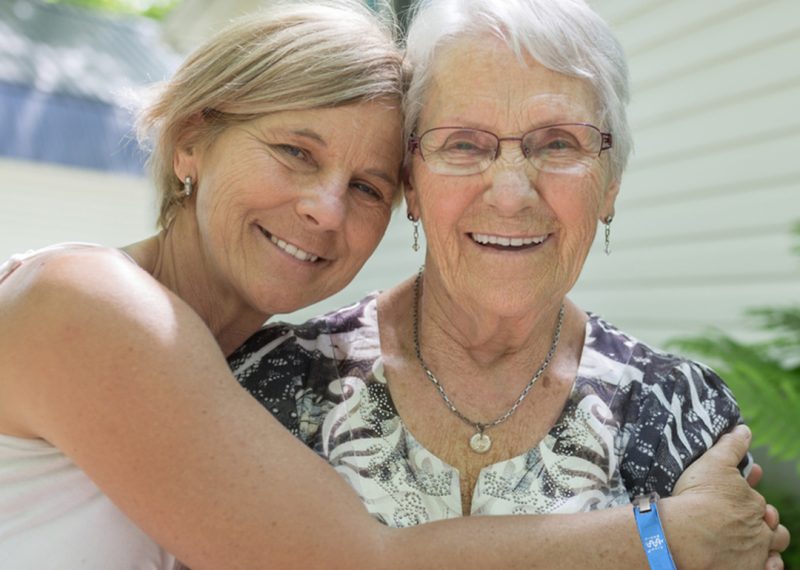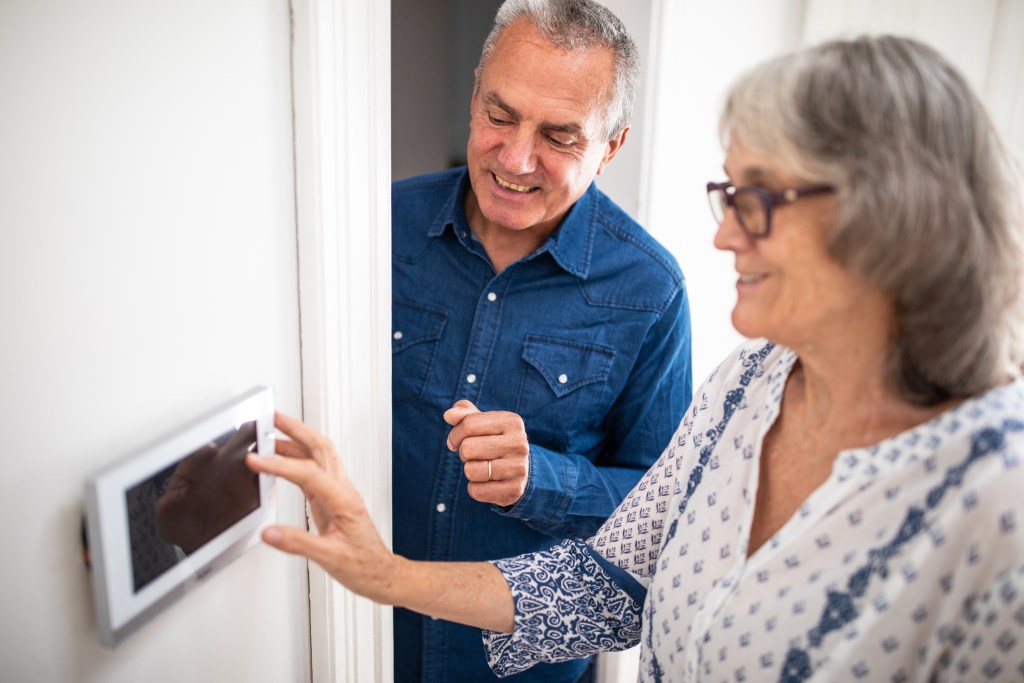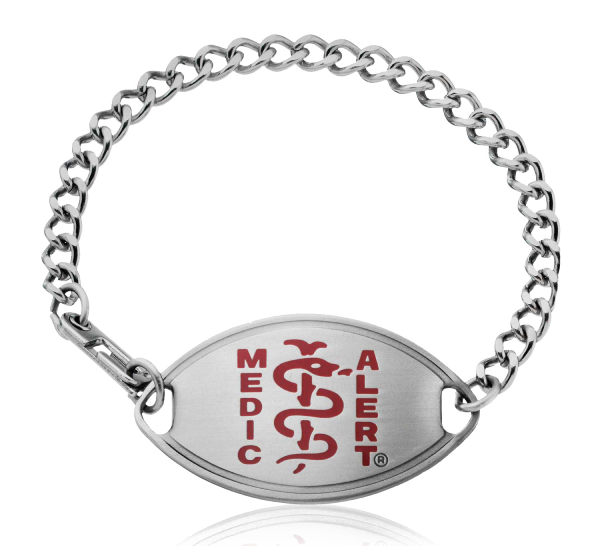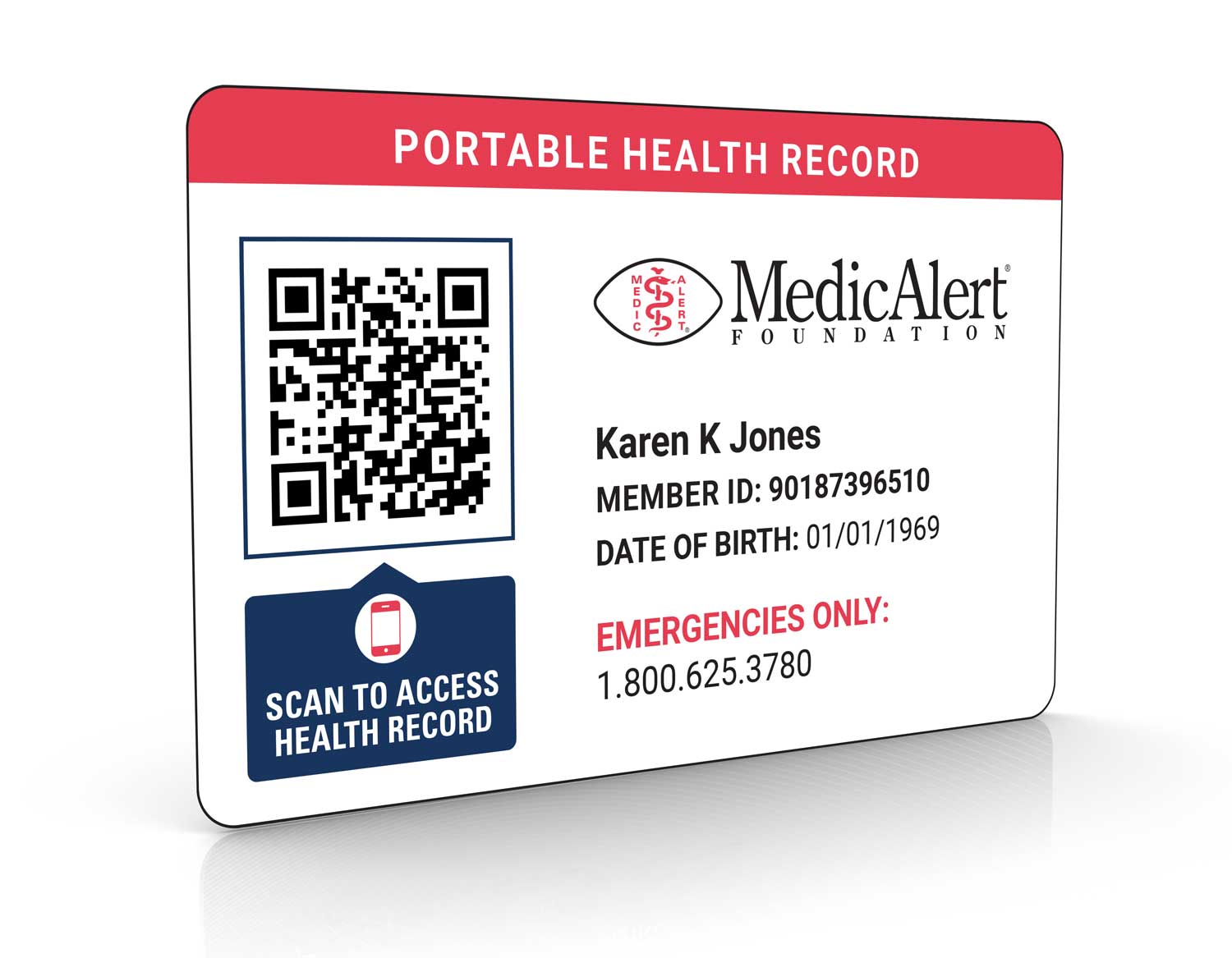
Wandering and Dementia: What You Should Know
Ways to keep your loved one safe and protected
and how MedicAlert’s Safe & Found™ protection can help
The Alzheimer’s Association reports that approximately 6.5 million Americans currently have an Alzheimer’s diagnosis. 83% of these seniors are in the care of family, friends, or other unpaid caregivers. For them, wandering and dementia is one of their top safety concerns. Wandering can lead to injury, or even death.
Unfortunately, for people with Alzheimer’s and other dementias, wandering is a common and dangerous occurrence. In fact, 6 in 10 people with dementia wander. If someone who wanders isn’t found quickly, their chance of injury or even death increases with each passing hour.
Caregivers can ease these worries by recognizing signs that someone might wander and taking steps to discourage wandering. And in case of a wandering incident, using tools to quickly and safely locate someone who is lost. Thankfully, there are many great resources available to help. MedicAlert is one of them.
Now, let’s take a closer look at wandering and dementia: why people with Alzheimer’s and dementia wander, and what you can to do protect your loved one.
Why do people with Alzheimer’s or dementia wander?
To prevent wandering, it’s helpful to first understand why someone with dementia might wander. The exact causes of wandering behavior are not fully understood. People with dementia are often restless, and they may stay in motion as a way to soothe themselves. They may be looking for something from their past. Sometimes they wander because a basic need is unmet.

The brain changes that come along with Alzheimer's and dementia contribute to the tendency to wander. They include:
Restlessness & anxiety
Overwhelming environments—noisy classrooms, bustling offices, or crowded public spaces—can be a significant barrier.
Difficulty recognizing surroundings
Some autistic people struggle with reading social cues, leading to misunderstandings and isolation; some may use assistive technology to write or speak.
Forgetting where friends & family live
Misconceptions about autism can lead to exclusion and isolation, further reinforcing feelings of not fitting in.
Confusion about tasks
Despite their unique strengths, autistic individuals frequently encounter discrimination, bullying, and environments that are not adaptable to their needs.
Becoming overwhelmed in unfamiliar settings
Despite their unique strengths, autistic individuals frequently encounter discrimination, bullying, and environments that are not adaptable to their needs.

Signs that someone may be at risk of wandering
Wandering is usually more common in the mid to late stages of Alzheimer’s. By paying careful attention to your loved one’s speech and behaviors, you can detect signals that they might wander. They may:
- Say things like “I have to go home/to work/shopping”
- Forget how to get to familiar places, including within their own home
- Pace, make repetitive movements, or show increased restlessness
- Go outside, but not remember to come inside
- Ask where past friends and family are
- Become more overstimulated, anxious or stressed than usual
Recognizing these signs and taking precautions before your loved one wanders is so important in preventing wandering incidents.
What you can do to reduce the risk of wandering
It’s easy to see why wandering is such a common occurrence for people with dementia. There are actions you can take to help reduce the risk of wandering. The Alzheimer’s Association suggests:
Provide daily structure & activities
This helps occupy and engage the person with dementia. This can include participation in everyday activities like cooking or folding laundry.
Meet basic needs
Sometimes people wander because they are hungry, thirsty, need to use the bathroom, or are uncomfortable. When these needs are regularly addressed, agitation is reduced.
Avoid crowded or busy locations
This reduces confusion and anxiety. If unfamiliar locations overwhelm a person, don’t leave them unsupervised in these situations.
Plan for wandering at specific times
Pay attention to the time of day when wandering usually happens, and offer activities and distractions at that time. Evenings are a common time for wandering (“sundowning”).
Offer companionship & reassurance
Especially as dementia progresses, it’s important to make sure someone is available at all times to help with daily tasks and to redirect wandering if it occurs.
Take precautions with vehicle use
In the early stages of dementia, GPS can help reduce the likelihood of getting lost. If someone is no longer driving, access to keys should be restricted.
Home safety tips to discourage wandering
Along with the above strategies to reduce confusion, anxiety, and other behaviors that lead to wandering, here are some tips to make your loved one’s environment safer.

- Install alarms on doors and windows (even battery-operated ones will work).
- Install locks on doors very high or very low so they are out of your loved one’s line of sight.
- Use doorknob covers and safety locks such as hinge locks on doors.
- Keep shoes, coats, purses, car keys, and similar items out of sight to avoid triggering the urge to go somewhere.
- Try covering doors with a curtain, blanket, or the same paint as the walls.
- A dark rug or tape on the floor in front of the door can be an effective visual barrier.
- Alert trusted members of your community of the possibility of wandering, so they know to act if they see the behavior.
If your loved one does wander and become lost despite all of these precautions, the best way to protect them is to make sure they wear a MedicAlert ID at all times, and are enrolled in a MedicAlert protection plan that includes the Safe and Found program.
MedicAlert offers lots of choices of medical ID styles. They include traditional medical IDs such as bracelets and necklaces, as well as non-traditional IDs that can be attached to clothing, shoes, or personal belongings. If you’re concerned about your loved one not wearing the ID, look for a bracelet with a sister hook clasp. It’s extremely difficult to remove on your own, so it’s more likely to stay on.
How does MedicAlert’s Safe & Found program work?
More than 15 years ago, the Alzheimer’s Association and MedicAlert Foundation collaborated to develop services to provide protection and safety for people at risk of wandering. Today, that program is called Safe & Found. As part of a MedicAlert Protection Plan, Safe and Found is available 24/7 to assist with wandering emergencies.
In the event a person with dementia wanders, families and caregivers should immediately call 911 to report their loved one missing. Then, activate Safe & Found by calling MedicAlert’s 24/7 emergency response center. MedicAlert’s team will then:
- Create a missing persons flyer and distribute to local authorities
- Relay critical medical and identifying information to EMS, police, and local medical facilities so they know to watch for the individual
- Coordinate with family and emergency contacts on any news about the search
In the event your loved one has wandered and is found by a first responder or Good Samaritan, the finder can contact MedicAlert via the 800 number on your loved one’s bracelet or necklace. We’ll immediately reach out to your loved one’s designated emergency contacts, and work with you and the finder to arrange a safe return home.
If your loved one needs medical care, MedicAlert will relay their health history to the emergency personnel treating them.
A MedicAlert ID paired with our unique Safe and Found program means that people with Alzheimer’s or other dementias are not alone in an emergency. If they are unable to find their way home or communicate important information, MedicAlert can be their voice.
Don’t wait to ensure your loved one is protected. At MedicAlert Foundation, our emergency response center takes many wandering calls a day. Everyday, we hear the anguish families feel when a loved one is lost, and their profound relief when their loved one is located safe and found. Wearing a MedicAlert ID backed by Safe and Found greatly increases the odds that your loved one will be returned home safely.
MedicAlert’s Safe & Found program is critical for wandering safety
In 67+ years of providing medical ID services, MedicAlert has proven our expertise in reuniting lost individuals with their families. Each year, more than 500 people who wandered are located thanks to MedicAlert IDs and the Safe and Found program.
As a caregiver, it’s important for you to implement strategies to try and prevent wandering. But as we’ve learned from calls to our emergency response center, people with Alzheimer’s and dementia can and will wander from safe places – even an assisted living facility or secure memory care unit.
That’s why it’s vitally important to equip your loved one with a high-quality and widely recognized medical ID, like the many choices available from MedicAlert. A MedicAlert ID enhances safety for your loved one, and offers peace of mind for you as a caregiver.
Pairing your loved one’s ID with one of MedicAlert’s Protection Plans increases security and protection. Our plans include features such as the Safe and Found program, 24/7 emergency response services, emergency contact notification, and a personal health history containing all the medical information that is important for first responders to know in an emergency.
Dementia is challenging, but peace of mind is available
With the right support in place, dealing with the challenges that are part of Alzheimer’s and dementia doesn’t have to be overwhelming. Taking the above steps can reduce the chances of wandering and ensure a safe return home if wandering does occur. And by joining millions of other families who trust MedicAlert, you and your loved one can have peace of mind knowing you have extra protection in case of a medical or wandering emergency.
The best time to take all these precautions for wandering and dementia is before your loved one wanders. Get started with MedicAlert today.
Sources: Alzheimer’s Disease: Facts and Figures, Alzheimer’s Association on Wandering, Dealing with Decline of Facial Recognition in Dementia, Alzheimer’s Disease Fact Sheet
Live confidently with MedicAlert

MedicAlert Membership
24/7 Protection
MedicAlert Member Benefits
Enjoy life-saving benefits and store your comprehensive health history for emergency treatment.

Wearable Medical IDs
for Any Condition
Wearable MedicAlert IDs
A medical ID communicates vital medical information to first responders so you can receive the care you need.

QR Code IDs
Scannable Medical IDs
QR Code Digital IDs
Perfect for people with multiple conditions and complicated histories.